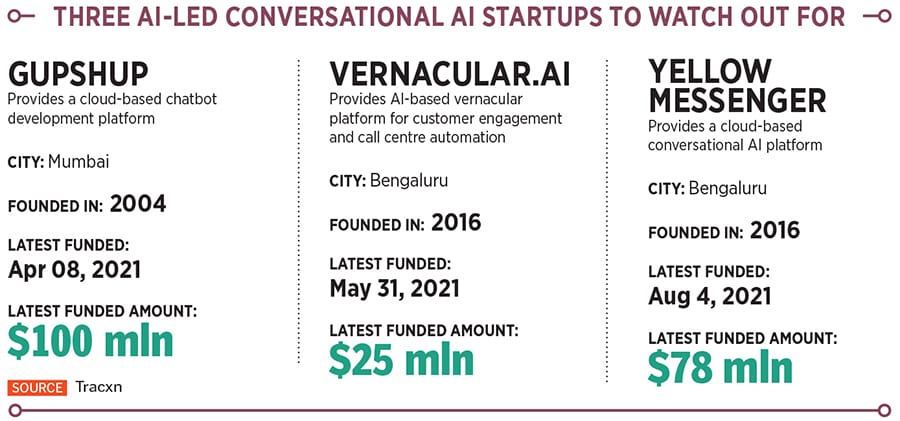
Conversational AI: We need to talk
Google, Alexa or Siri: Interactive conversational AI is now big business, and ready for the next frontier
 Illustration: Sameer Pawar
Illustration: Sameer Pawar
Most of us are used to saying, ‘Okay Google’ or ‘Alexa’ or ‘Hey Siri’, followed by an instruction to get the weather or call a contact and so on. Interactive conversational AI is now big business, spanning people’s homes as well as customer support at the world’s biggest companies.
Deep learning algorithms are becoming increasingly human in the way they interact with humans, through voice or chat messages. Yellow.ai in Bengaluru is a startup that wants to take this further—automating all ‘customer experience’ interactions.
A discussion about poor customer support gave birth to Yellow Messenger, the startup that CEO Raghu Ravinutala co-founded with two friends. They started with an Android app for people to interact via messaging with businesses. Today Yellow.ai has customers around the world.
“The vision of our company is total customer experience automation,” Ravinutala says. Yellow.ai has more than 700 large customers in more than 50 countries. The company is backed by well known venture capital investors, including Lightspeed Venture Partners.
At the heart of Yellow.ai’s technology is its ability to make sense of natural language, whether on chat or voice. It has built a natural language processing (NLP) engine to handle interactions between companies and consumers. This is trained to understand how people talk or chat and then trigger actions to resolve the customer’s queries. Yellow.ai supports multiple languages around the world.
(This story appears in the 30 November, -0001 issue of Forbes India. To visit our Archives, click here.)









